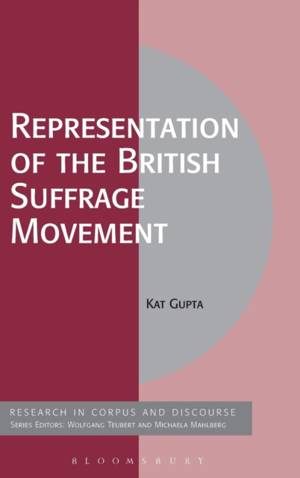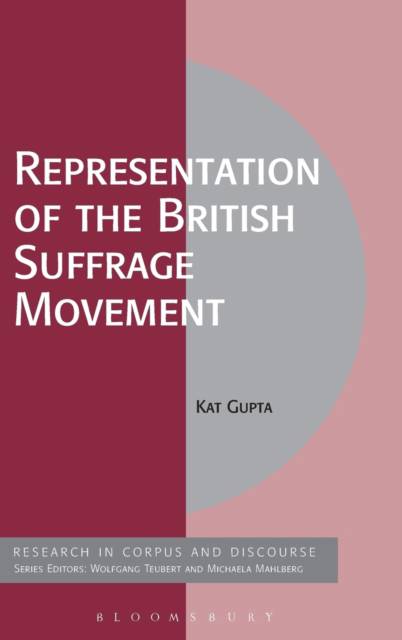
- Afhalen na 1 uur in een winkel met voorraad
- Gratis thuislevering in België vanaf € 30
- Ruim aanbod met 7 miljoen producten
- Afhalen na 1 uur in een winkel met voorraad
- Gratis thuislevering in België vanaf € 30
- Ruim aanbod met 7 miljoen producten
Zoeken
€ 296,95
+ 593 punten
Uitvoering
Omschrijving
Focussing on The Times, this monograph uses corpus linguistics to examine how suffrage campaigners' different ideologies were conflated in the newspaper over a crucial time period for the movement - 1908 to 1914, leading up to the Representation of the People Act in 1918.
Looking particularly at representations of suffrage campaigners' support of or opposition to military action, Gupta uses a range of methodological approaches drawn from corpus linguistics, discourse analysis and CDA. These include: collocation analysis, examination of consistent significant collocates and van Leeuwen's taxonomy of social actors.
The book offers an innovative insight into contemporary public understanding of the suffrage campaign with implications for researchers examining large, complex protest movements.
Looking particularly at representations of suffrage campaigners' support of or opposition to military action, Gupta uses a range of methodological approaches drawn from corpus linguistics, discourse analysis and CDA. These include: collocation analysis, examination of consistent significant collocates and van Leeuwen's taxonomy of social actors.
The book offers an innovative insight into contemporary public understanding of the suffrage campaign with implications for researchers examining large, complex protest movements.
Specificaties
Betrokkenen
- Auteur(s):
- Uitgeverij:
Inhoud
- Aantal bladzijden:
- 288
- Taal:
- Engels
- Reeks:
Eigenschappen
- Productcode (EAN):
- 9781472570895
- Verschijningsdatum:
- 19/11/2015
- Uitvoering:
- Hardcover
- Formaat:
- Genaaid
- Afmetingen:
- 152 mm x 236 mm
- Gewicht:
- 566 g

Alleen bij Standaard Boekhandel
+ 593 punten op je klantenkaart van Standaard Boekhandel
Beoordelingen
We publiceren alleen reviews die voldoen aan de voorwaarden voor reviews. Bekijk onze voorwaarden voor reviews.








